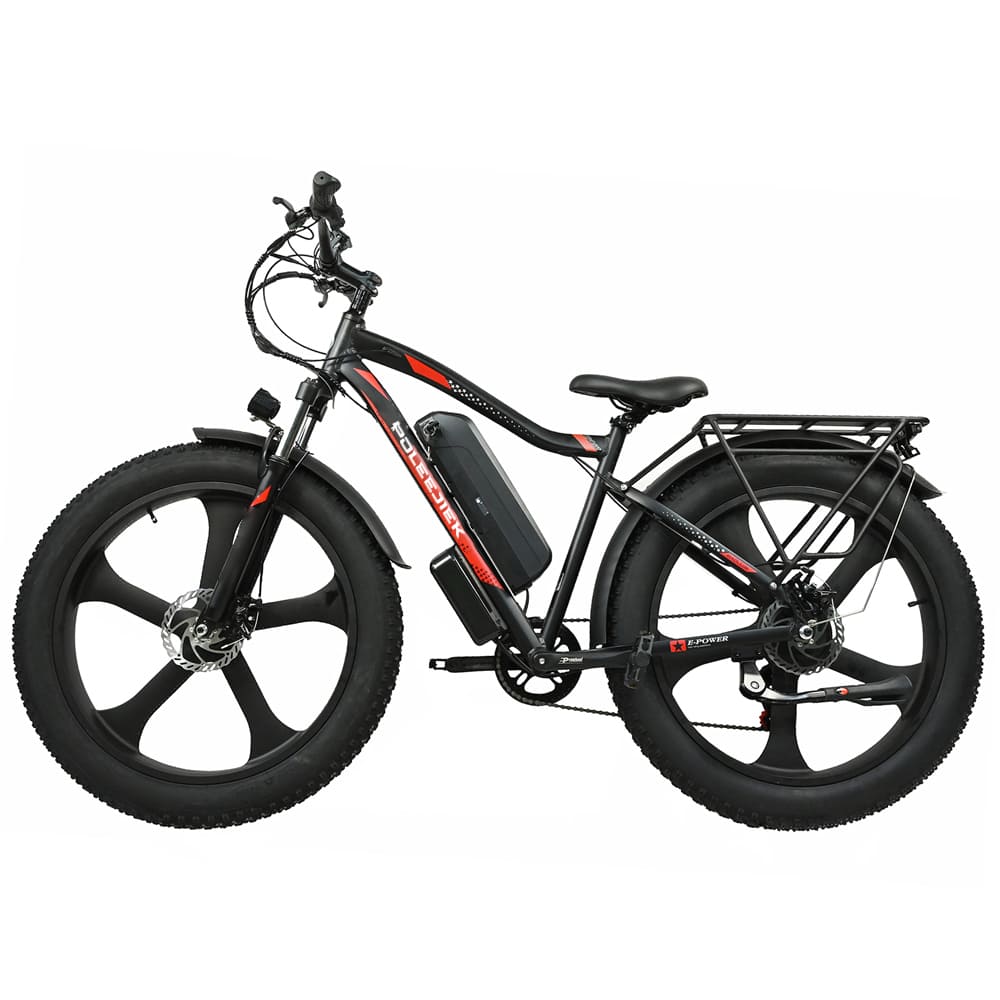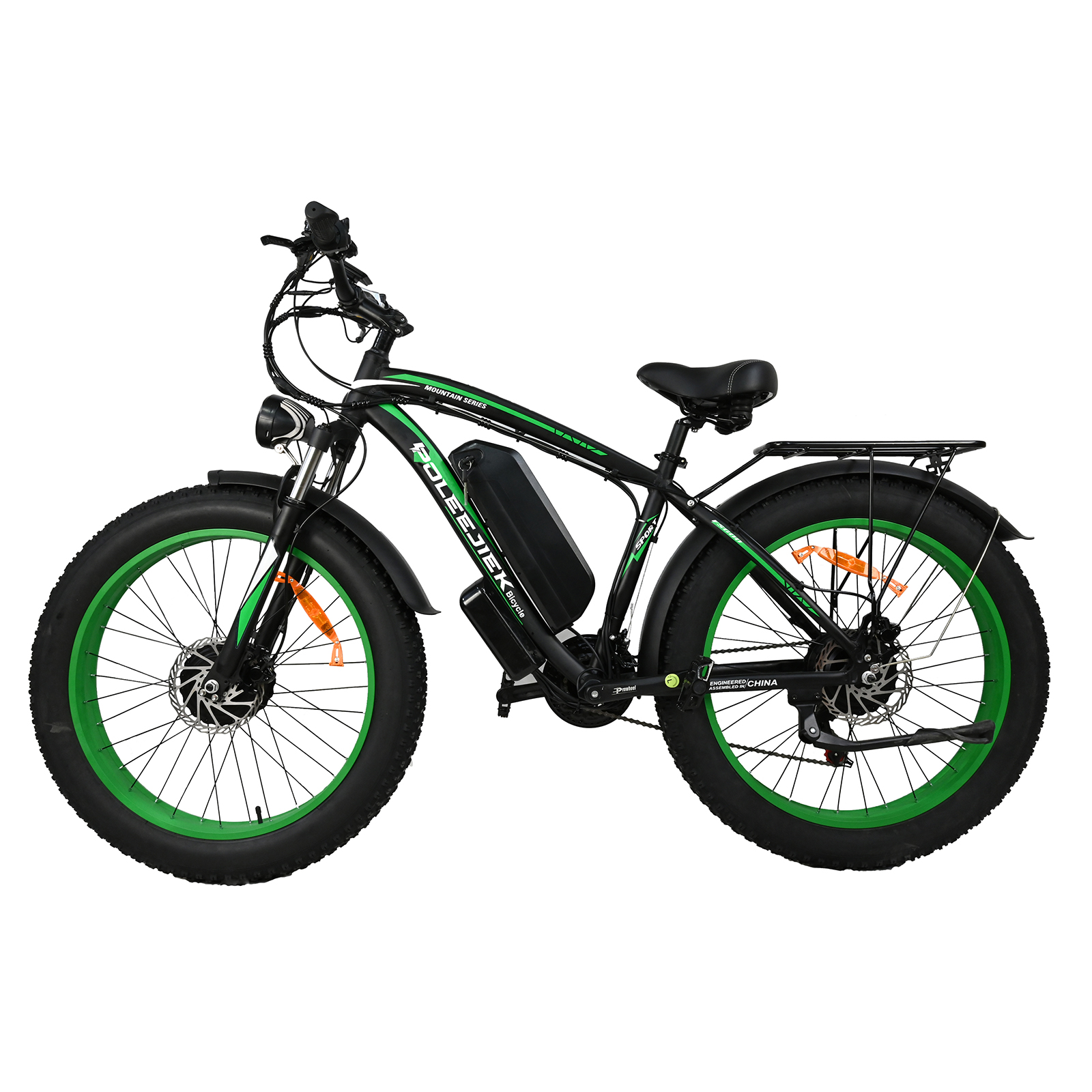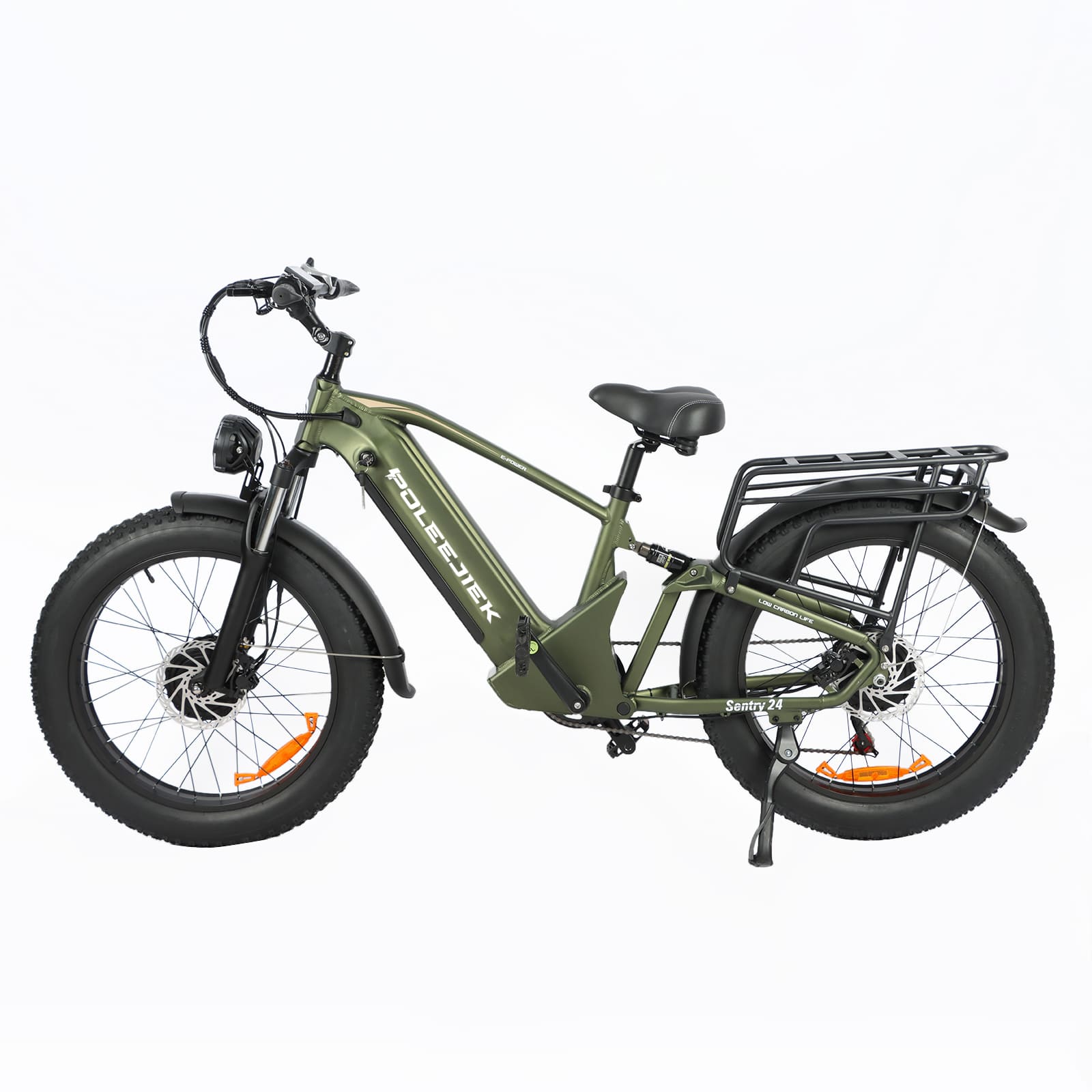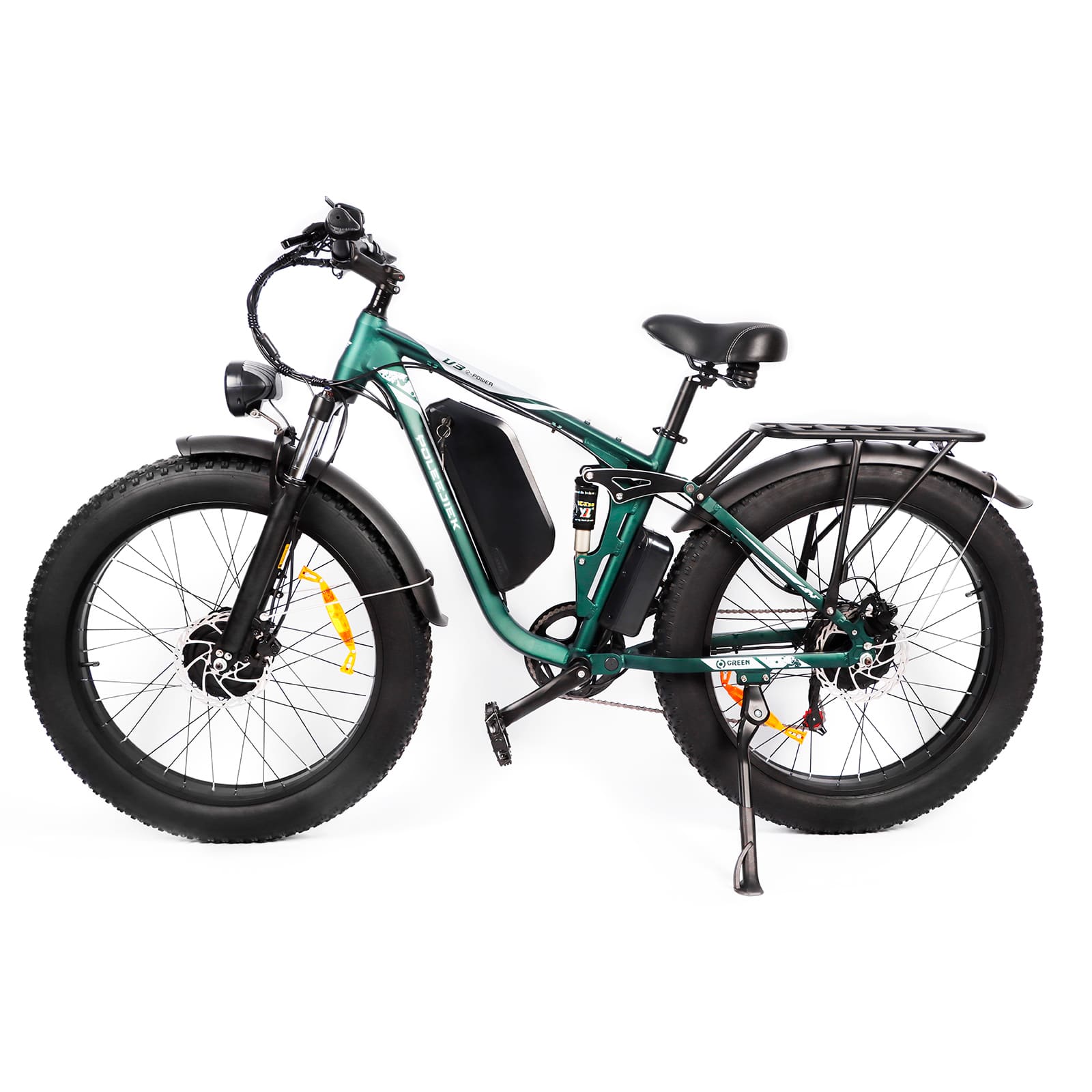E-Bikes in Food Delivery: Seizing the Professional Market
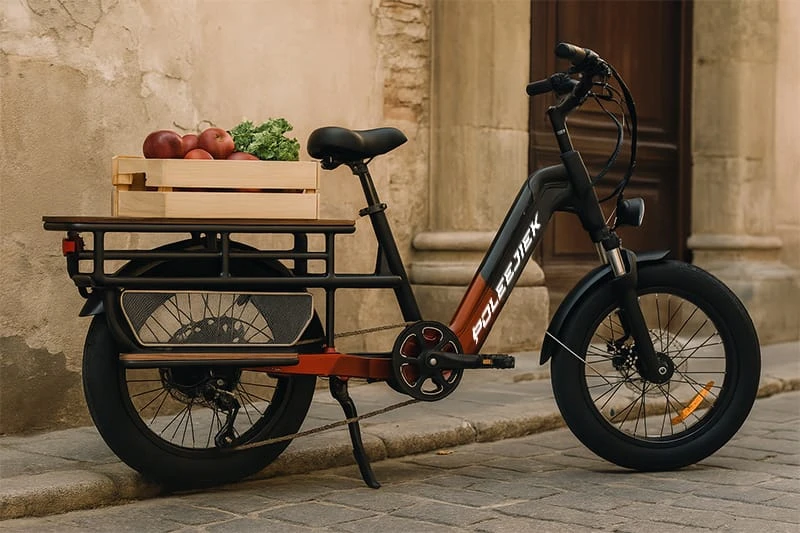
You’ve probably noticed more delivery drivers on electric bikes in your city. This isn't just a local trend; it's a global shift. In the UK, hot food delivery has actually become more popular than dine-in or takeaway. For restaurants offering all three options, nearly half (45%) of all orders now come from delivery platforms. Only about a third (31%) of customers choose to dine in, and just a quarter (24%) opt for takeaway. Delivery has officially moved from an "occasional treat" to a "daily choice."
You might have heard stories about inefficient delivery in Western countries, but that's no longer the case. Statistics show that in the UK, 48% of all food deliveries are completed by electric bikes, with another 33% handled by e-scooters. This boost in delivery efficiency has, in turn, fueled consumer demand.
|
UK Restaurant Order Source |
Percentage of Orders |
|---|---|
|
Delivery Platforms |
45% |
|
Dine-In |
31% |
|
Takeaway |
24% |
Key Takeaways
-
E-bikes are the new backbone of UK food delivery, handling 48% of all orders thanks to their urban efficiency.
-
You get key advantages over cars: lower costs, high flexibility in old city centers, and zero emissions, which boosts a platform's green image.
-
The market is shifting from "any bike will do" to "specialized tools," as seen with Domino's custom DXB delivery e-bike.
-
Regulatory challenges around non-compliant and unsafe e-bikes are rising, signaling a clear market need for "regulation-ready" models.
-
This creates a major opportunity for manufacturers to focus on compliance, professional-grade durability, and integrated service solutions for delivery fleets.
Why E-Bikes Dominate the Delivery Market
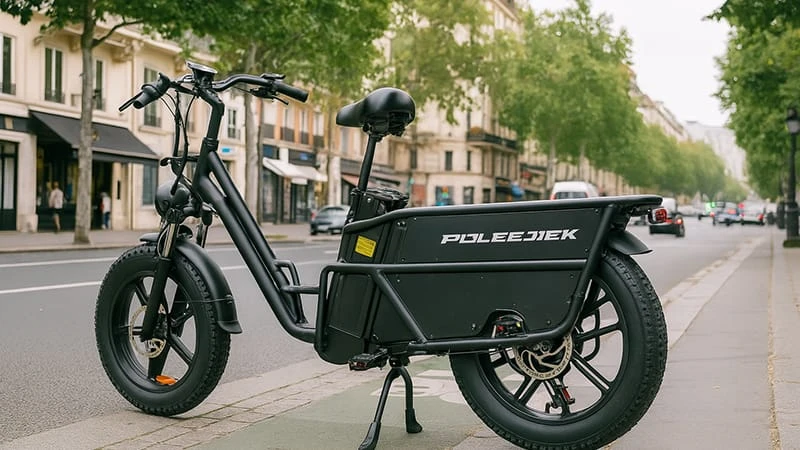
Key Advantages for Urban Delivery
You might wonder why electric bikes have become the vehicle of choice over cars or mopeds. It comes down to a few critical advantages in modern cities:
-
1. High Flexibility: In the old city centers common in Europe, cars simply can't navigate the narrow alleys. E-bikes, however, can weave through small streets and solve the "last-mile" problem with ease.
-
2. Low Cost: Compared to cars or motorcycles, the purchase and maintenance costs for e-bikes are significantly lower. This makes them the preferred choice for both independent riders and delivery platforms.
-
3. Eco-Friendly Bonus: With a global push for low-carbon transport, zero-emission e-bikes fit the trend perfectly. This also enhances the social and corporate image of the delivery platforms.
-
4. Sufficient Speed: For short-distance deliveries (e.g., 3-5 kilometers), an e-bike's speed is more than enough. Crucially, you can bypass traffic jams, which often makes e-bikes faster and more reliable than cars during peak hours.
Tip: The agility of e-bikes in congested traffic is their biggest advantage, directly increasing the number of deliveries a rider can make per hour.
From "Usable" to "Professional": The Market Evolves
The "Pizza E-Bike" Signal
The demand for better delivery tools is changing the market. You can see this shift in specialized vehicles like the one from Domino's. The pizza giant launched a dedicated delivery e-bike: the DXB.
This isn't just a standard "delivery bike." It was custom-designed for one purpose: delivering pizza. It features an integrated, fan-forced, temperature-controlled cargo box, an advanced suspension to reduce bumps, and GPS tracking to ensure the pizza arrives hot and intact. This sends a clear signal: the delivery market is upgrading from "tools that work" to "tools that work perfectly."
While the Domino's DXB is a niche, high-end product, the real workhorses of the industry are the e-bikes ridden by everyday couriers. They may not be as flashy, but they win on flexibility, cost, and eco-friendliness. These workhorses often fall into the category of specialized cargo electric bikes, designed for heavy-duty urban delivery. For most delivery fleets, models like the BLJ-DC009 cargo e-bike (750W, long-range) offer a balance of specialization and cost-effectiveness, with reinforced racks for insulated delivery boxes.
|
Feature |
Standard Delivery E-Bike |
Domino's DXB (Specialized) |
|---|---|---|
|
Purpose |
General delivery |
Specifically for pizza |
|
Cargo |
Rider's insulated backpack or rack |
Integrated heated cargo box |
|
Suspension |
Standard fork/seat suspension |
Anti-vibration structure |
|
Advantage |
Low cost, high flexibility |
Guaranteed product quality on arrival |
The "Wild West": E-Bike Regulations and Safety
Growing Pains in the Market
However, the rise of e-bikes in delivery hasn't been completely smooth. In the UK, for example, media reports have highlighted that many e-bikes used for delivery do not meet road safety standards. You'll find bikes that are:
-
Too fast (exceeding legal speed and power limits).
-
Equipped with unsafe, uncertified batteries. Global standards like UL (outlined in U.S. e-bike safety laws) are now becoming benchmarks for battery safety in delivery fleets.
-
Illegally modified, turning them into potential "road killers."
On one hand, the e-bike's role as the "tool of choice" reflects massive market demand. On the other, lax regulatory enforcement has led to signs of "savage growth."
This situation, however, is a classic sign of a market on the verge of maturing. Tighter regulations from governments and platforms are inevitable. This isn't a crackdown; it's a massive boost for compliant, professional-grade products.
🚦 Note: As regulations tighten, non-compliant "rogue" e-bikes will be pushed out, creating a vacuum that only "regulation-ready" e-bikes can fill. These include street-legal models that meet local speed and power limits without modification.
Opportunities for E-Bike Manufacturers
So, what opportunities can you see in this trend? For manufacturers and fleet managers, the path forward involves three key areas:
1. Win the "Regulation-Ready" Market
You can get ahead by addressing compliance *before* it becomes a widespread problem. Develop and promote models that are "pre-compliant" with upcoming regulations in key markets (like speed limits, motor power, and battery certifications). This provides peace of mind for platforms and riders, solving a major headache for them.
2. Create "Professional-Grade" Delivery Models
A standard commuter e-bike was not built for the high-intensity, 8-hour-a-day use of food delivery. You can develop dedicated models with features like 750W motors and 48V batteries (e.g., BLJ-T001) to support all-day delivery runs:
-
Reinforced frame structures for durability.
-
Larger capacity, safety-certified batteries (e.g., UL or CE certified).
-
Integrated waterproof and dustproof phone mounts with charging ports.
-
Reserved power interfaces for heated cargo boxes.
This upgrades the bike from a simple "vehicle" to a true "productivity tool." Cases like the BLJ-DC008 cargo e-bike show how such upgrades redefine urban delivery efficiency.
3. Provide "Integrated Fleet Solutions"
The opportunity isn't just in selling bikes. You can partner with delivery platforms to offer B2B packages that include the vehicle, maintenance, insurance, and even battery-swapping services. This turns a one-time sale into long-term service revenue. At the same time, you can use vehicle data to help platforms optimize delivery routes and fleet management.
The continued expansion of the global delivery market and the trend toward professionalization are clear. For e-bike manufacturers, the future lies in moving toward "Compliance, Specialization, and Service" to create the next generation of efficient, reliable "productivity tools." You can explore professional models that are ready for this challenge. 🚴♂️
FAQ
Why are e-bikes better than e-scooters for delivery?
E-bikes often have fewer legal restrictions. In many cities, you can use them in bike lanes where scooters or mopeds cannot go. They are also quieter, generally have lower maintenance costs, and the pedaling action extends their range significantly.
What is the biggest safety concern for delivery e-bikes?
The primary safety concern is the battery. Illegally modified or uncertified lithium-ion batteries pose a significant fire risk, especially when charged improperly in residential buildings. This is why upcoming regulations will focus heavily on battery safety standards.
What does "regulation-ready" mean for an e-bike?
A "regulation-ready" e-bike is one that already meets the legal standards of a specific region, right out of the box. This typically includes:
-
A motor power limit (e.g., 250W in the UK/EU, 750W in most US states).
-
A maximum assisted speed limit (e.g., 15.5 mph / 25 km/h in the UK/EU).
-
Certified components, especially a battery with a UL or CE certification.
Can you use a regular e-bike for food delivery?
Yes, and many riders do. However, standard commuter e-bikes are not designed for the constant, high-mileage use of delivery. You'll likely face issues with faster battery degradation, frame wear, and more frequent maintenance. Professional-grade models are built to withstand this heavy use. For a detailed list of such models, check out the best electric cargo bikes for 2025, tailored for B2B delivery needs.



